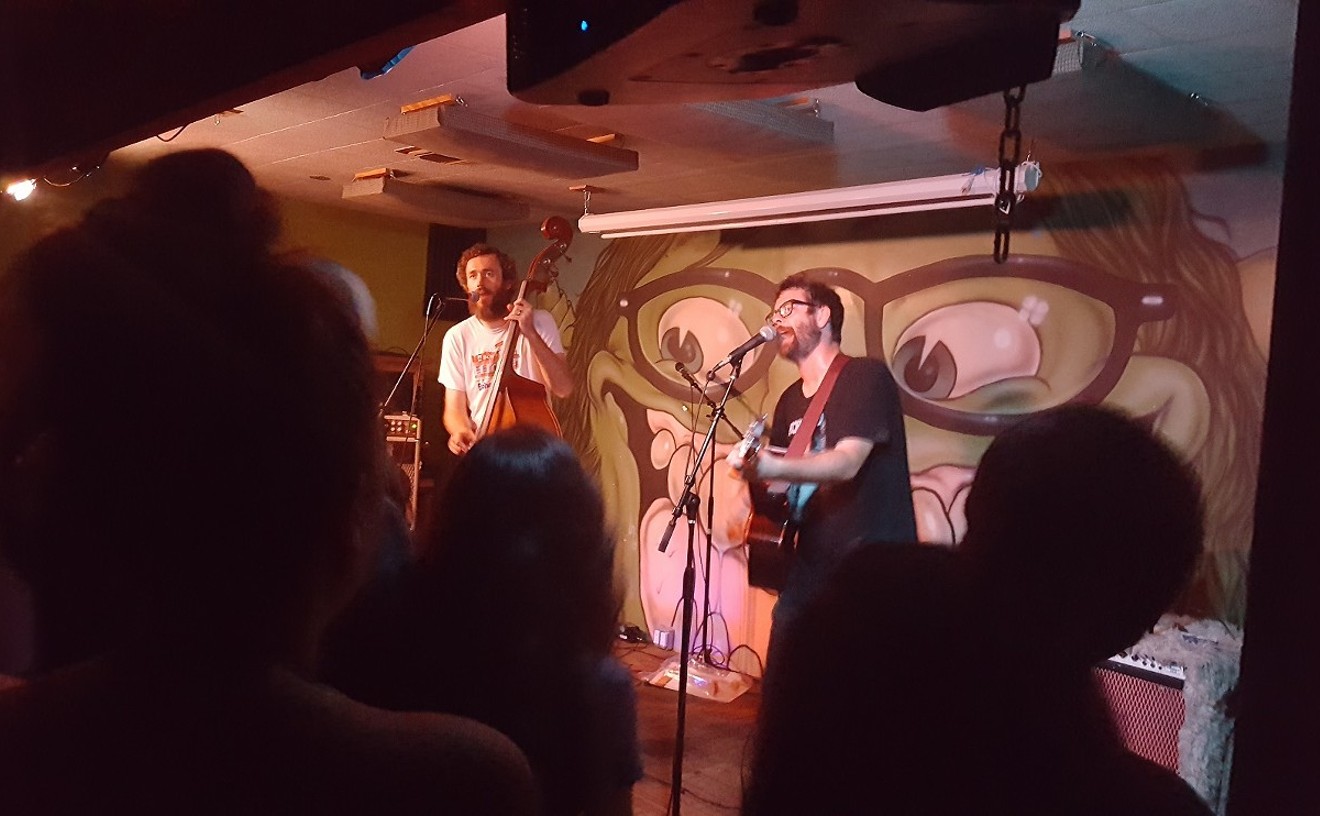"Remix" fits right in with the Heard's mission, if not with the museum's international reputation as a place that educates visitors about the history of Native culture with artifacts like blankets, pots, and jewelry galore. The Heard also aims to provide education about today's Native cultures, and that means exploring diverse backgrounds. Contemporary art certainly isn't the most straightforward method of educating the public, but this show does grapple with issues of modern Native identity. In his nearly five years at the Heard, Baker earned a reputation as a curator who is not afraid to challenge museumgoers' expectations, and to push the museum toward an updated perspective on Native American culture.
I found his swan song only partially successful.
Some works not only illustrate the theme well but also challenge the textbook summations of cultures that, in some ways, define this nation's history. But others fall flat as mere celebrations of diversity. Not that celebration is a bad thing, but those pieces seem two-dimensional when placed next to more thought-provoking works. And there are others that hardly seem to touch the theme at all, with the only connector being that the artist is of mixed heritage. The inconsistency left me with mixed feelings.
I must admit that one of my favorite pieces really didn't have much connection to the theme. Just off the main lobby, I was greeted by NFB-Owatouna by Bernard Williams, who is of African and Native American ancestry. This gorgeous sculpture sits in the center of the gallery and is about the size of a California King mattress. Thin wood board has been cut into sinewy decorative spirals, painted black and intertwining. The scrolling designs pay tribute to the late-19th-century Chicago-based architect Louis Sullivan, who created such art nouveau patterns for his buildings' ironwork. Sullivan is considered a pioneer in modern architecture, responsible for the adoption of steel in high-rise buildings. Williams borrows the same design aesthetic and elevates it to a strong work of art rather than a mere adornment on a structure. This stunning sculpture is a commentary on a bit of American history but doesn't move much further.
Williams' second piece, Charting America, is a wall installation that also shows his obvious interest in history. This time, he bumps it right into the theme. It's the most successful work in the gallery, as it is well-executed and an intelligent exploration. Organized in horizontal bands, the piece is a narrative of United States history. Williams uses symbols, made from cut wood and cardboard, and chosen items to represent different moments of history. The objects (often simple cartoon-like silhouettes) are placed side by side and read like a book. There are indigenous designs, a colonial ship, a silhouette of a man's head with a neck shackle, guns, a computer and more. The narrative stretches from the Heard's tall ceiling to the floor. It's a dramatic sight. With this work, Williams is looking at our country's mixed history and communicating the story in a visual language that is recognizable and understood. He isn't just a great artist; he's a great history teacher, as well.
My enthusiasm quickly turned to helpless confusion when I saw Counterpoint by Franco Mondini-Ruiz. The artist, a Tejano of Mexican-American and Italian descent, fills a wall with small canvases. Each acrylic painting is rendered in an extremely childish style and usually focuses on one subject per canvas. The series includes paintings of high-class women, cats, crucified Jesuses, a seated man with a halo smoking a cigarette, and other unrelated images. The seemingly random subject matter is taken from tchotchkes found in thrift shops. Mystified, I read the wall panel, hoping to gain some insight. It was an excerpt from his book, telling a story about how his brother, who is a Republican, looks more Mexican than he does and doesn't mind it when his white neighbors mistake him for their gardener. Further lost, I continued to scramble for a connective thread. Turns out, these works were created and sold in a live marketplace as a performance piece. But the patrons obviously aren't able to take their paintings home until this exhibition is over. While the actual performance, a commentary on the art market, may have been interesting to see, the presentation in the show with its unrelated wall panel loses the viewer and the artist's message.
The video installation Let's Dance! by Anna Tsouhlarakis (Navajo/Greek) definitely took the confusion away but replaced it with disappointment. Filmed in Maine during her residency at Skowhegan School of Painting and Sculpture, Tsouhlarakis videotaped herself and others doing a different dance each day. Most of the time, she had different partners teaching her dances that included salsa, the Hokey Pokey, and the Electric Slide. Hate to say it, but Tsouhlarakis is just a bad dancer and she's often dressed in a baggy T-shirt and scrubby shorts. The music choices were often just off the mark and I really lost it when she did Tai Chi (is that even considered a dance?) to Enya. It's easy to see that Tsouhlarakis wanted to experience cultural diversity by learning various dances. Not a horrendous idea, but certainly a simple one. And with a lazy execution, the experience amounted to watching bad dancers awkwardly flail their limbs to undesirable music.
The show lifted me up, brought me down, and left me scratching my head — proof our melting pot still needs some stirring.










